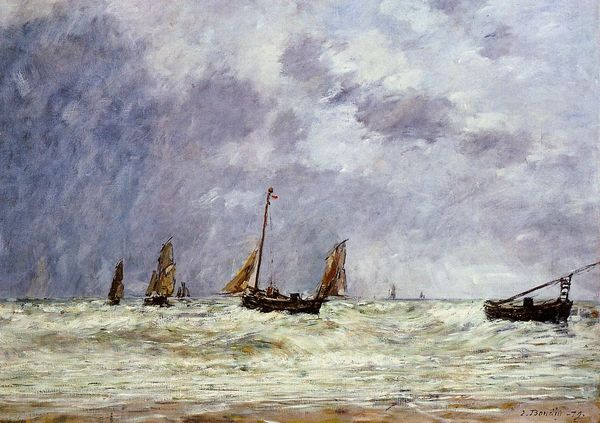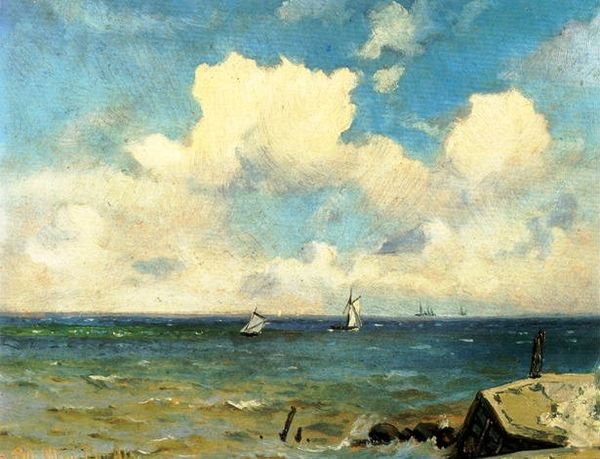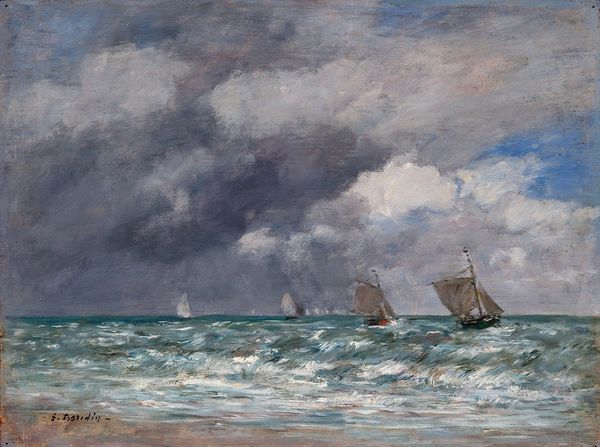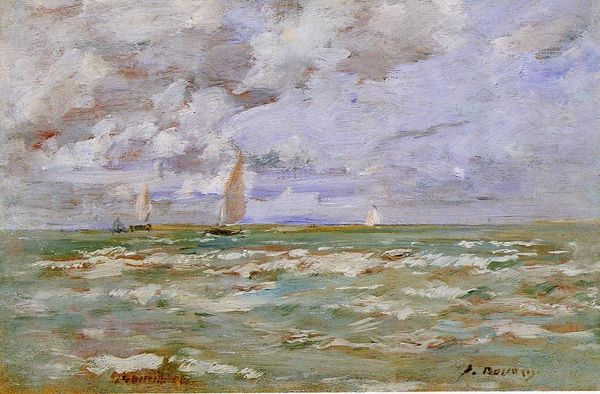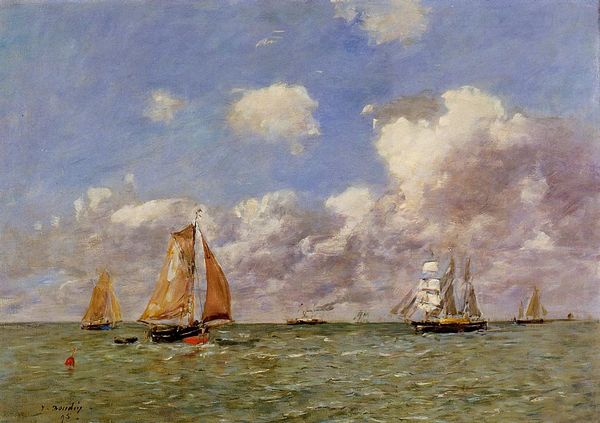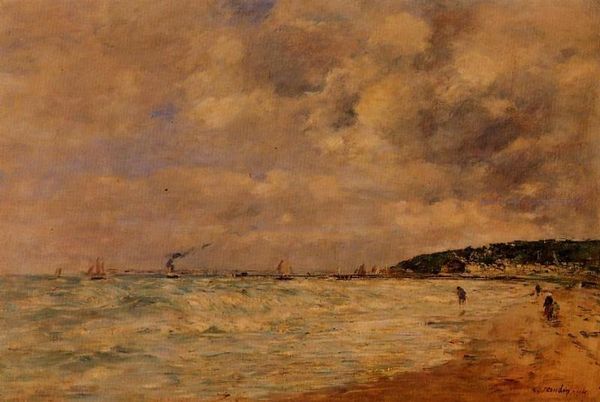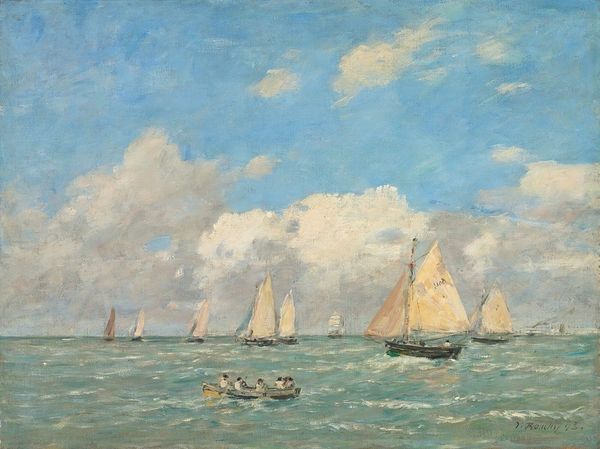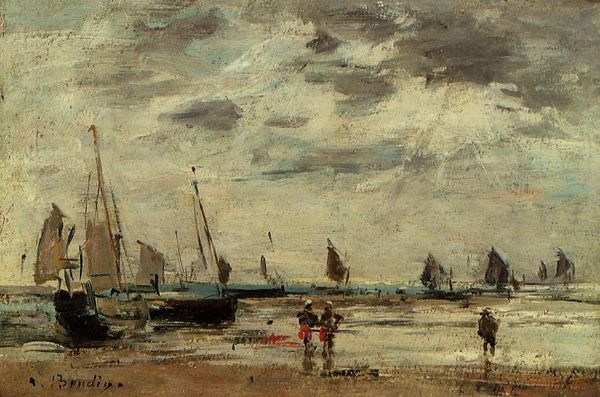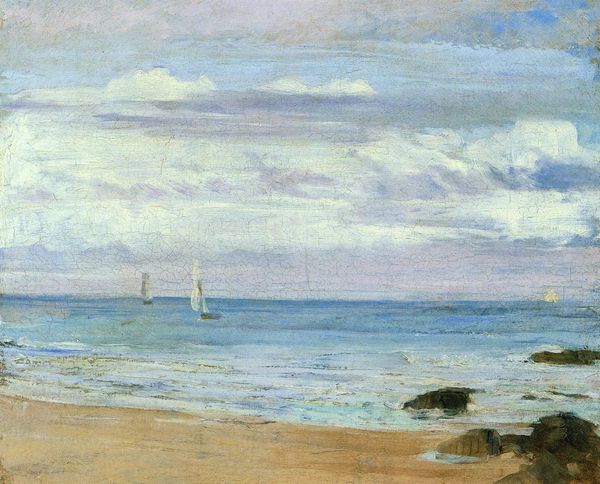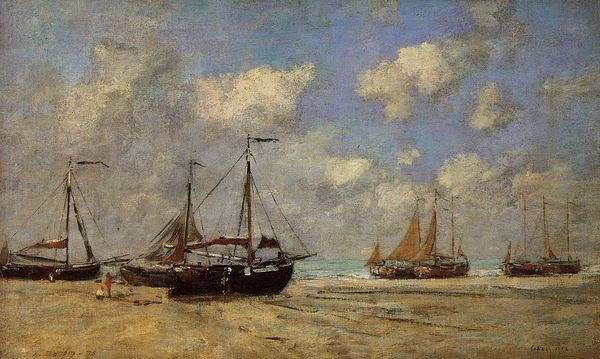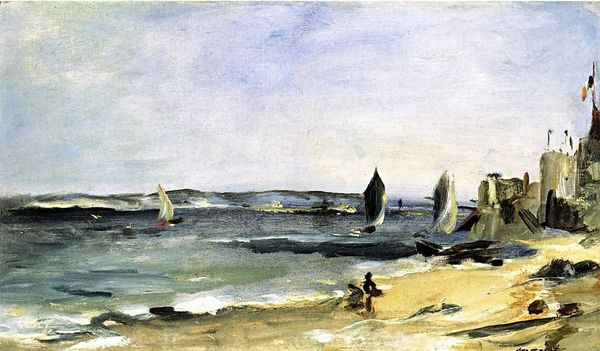
Copyright: Public domain
Editor: We're looking at Eugène Boudin's "Fishermen and Sailboats near Trouville," an oil painting from 1892. It's mostly grey and brown; the texture makes me think of a gloomy day at the beach. What do you see in this piece? Curator: Immediately, the striking dominance of the sky demands attention. Note the density of the cloud formations – observe how Boudin contrasts the heavy, layered brushstrokes of the upper register with the relative lightness in the sea and figures below. It establishes a compelling formal tension. Editor: It definitely feels heavy. So, the relationship between the sky and everything below is significant? Curator: Precisely. Consider the tonal gradations across the canvas; how the earth and sea are anchored with warmer hues, providing a foundation against the cool, atmospheric sky. Observe too how the scale and placement of the fishing boats punctuate this visual dynamic. Are these elements of design choices rather than representational fidelity? Editor: Yes, they create balance but also a contrast between nature's scale and humans' place. Did that thinking lead to later art movements? Curator: It's certainly a pivotal engagement that opens avenues. By prioritizing formal relations - like colour, brushstroke, composition, and surface tension – rather than striving for realistic representation, Boudin directs us to a deeper structural understanding. A valuable shift! Editor: Seeing the contrast in textures and tones now, the "gloomy" impression changes to more nuanced feeling about balance between humans, the sea, and sky. Curator: Indeed. The visual language informs our emotional response. Close inspection unlocks such sophisticated structural achievements.
Comments
No comments
Be the first to comment and join the conversation on the ultimate creative platform.
